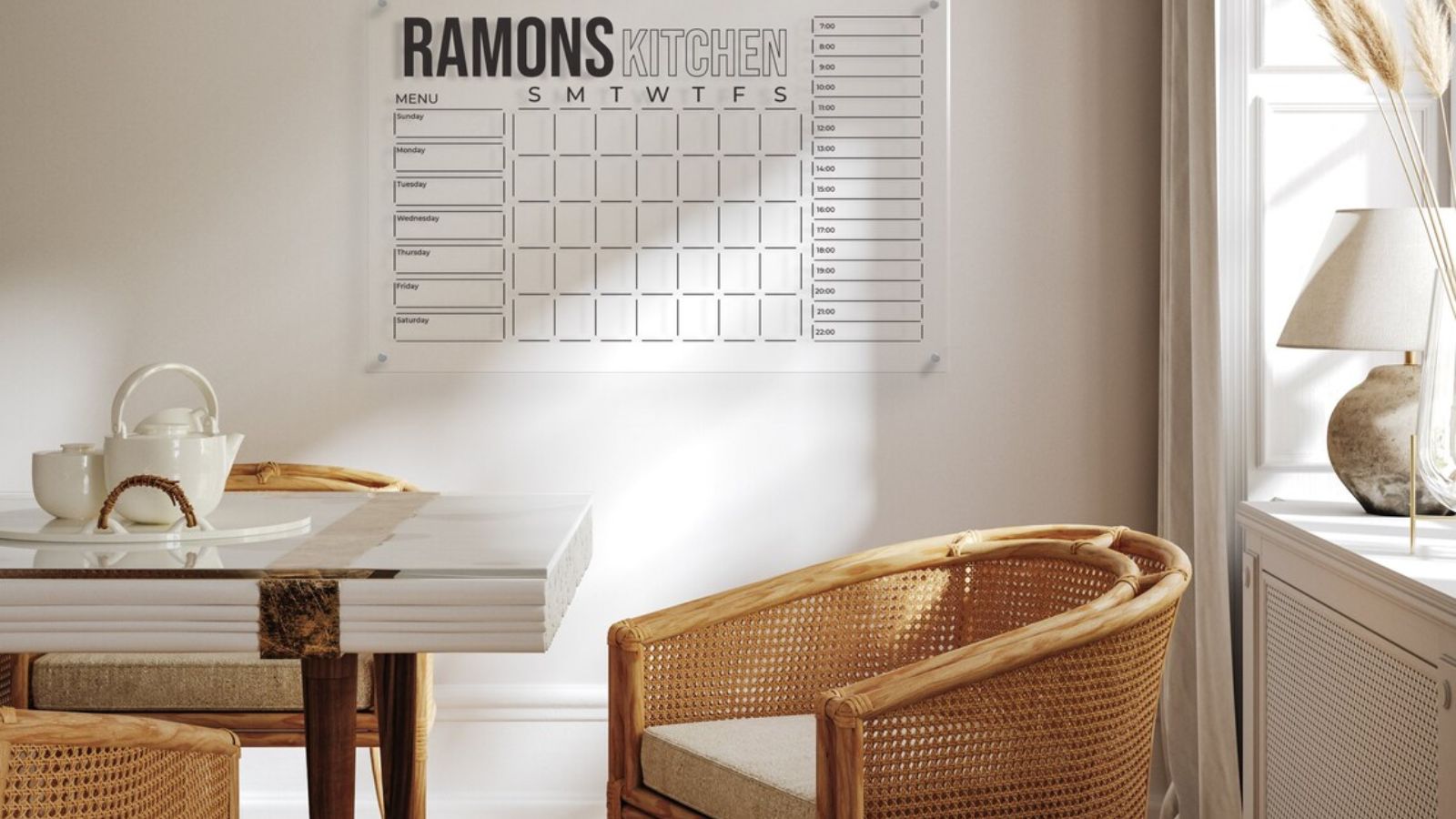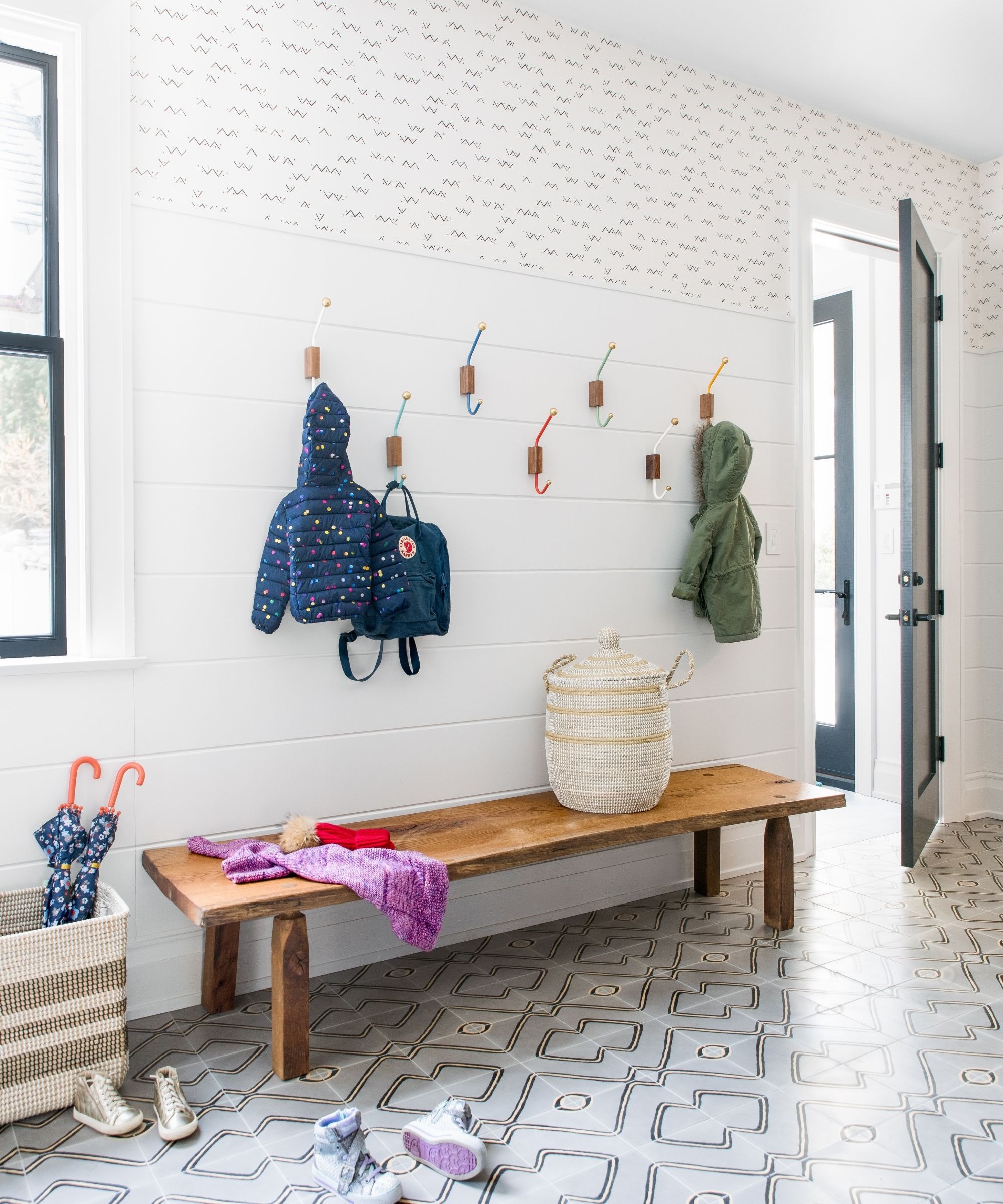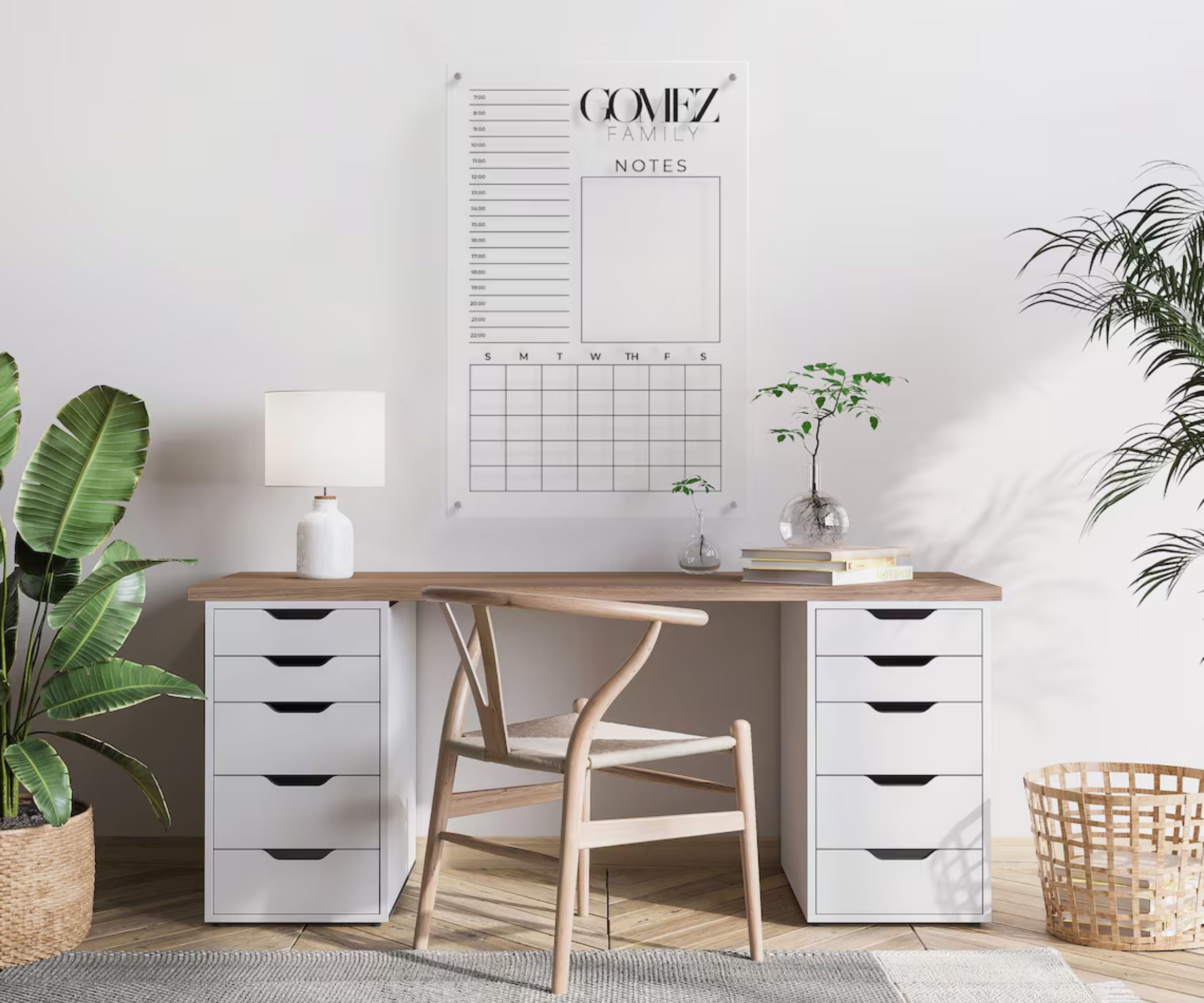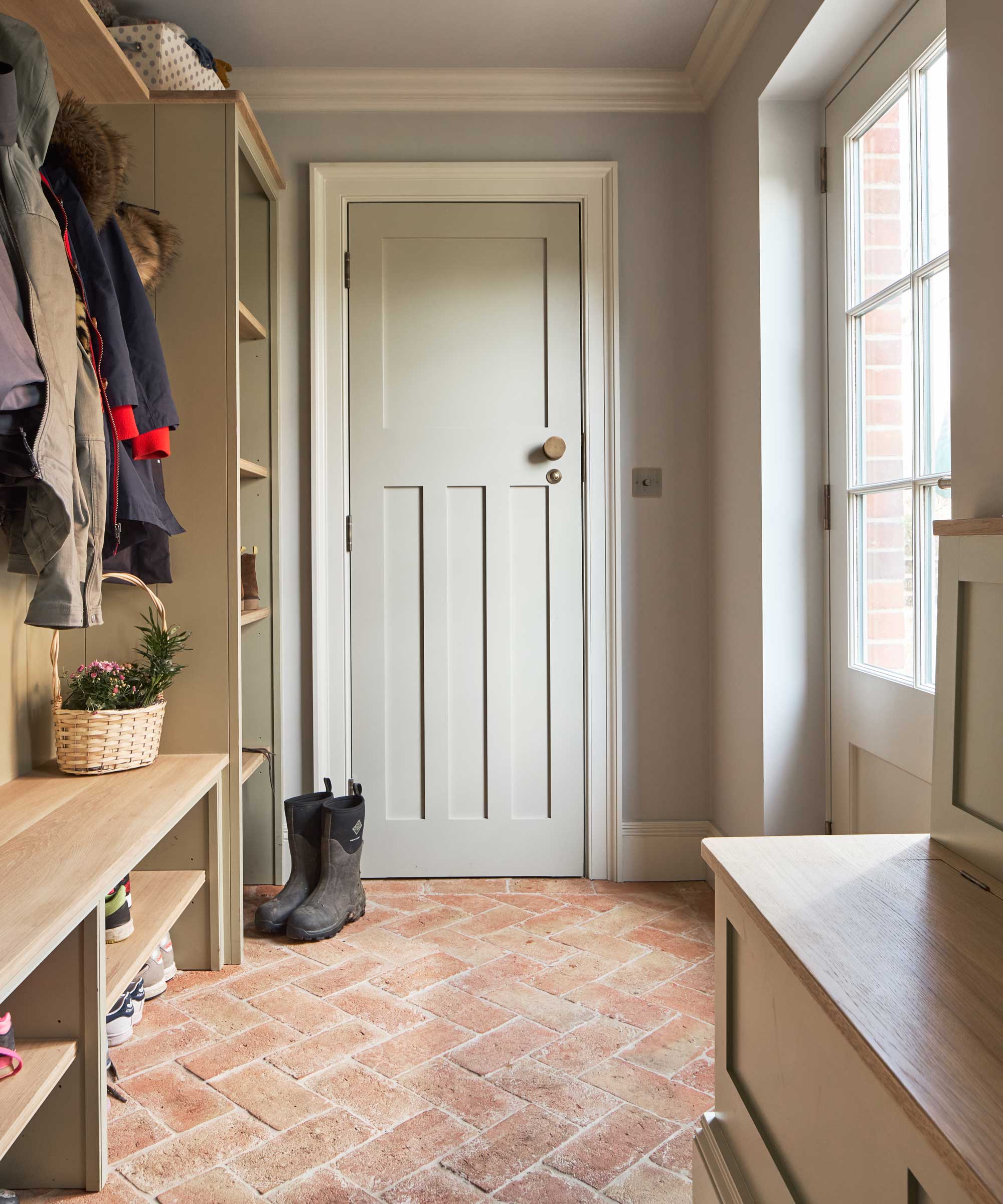
Ever feel overwhelmed trying to organize the whole family? The solution can be as simple as creating a command center. This can transform the way you plan and organize, serving as a central hub for sharing information, coordinating activities, and providing a clear overview of commitments and schedules in the days and months ahead.
This is one of the things the most organized families have in common, and for good reason. Establishing a command center, or family planner, can minimize the potential for miscommunication and scheduling conflicts – and, with any luck, alleviate you of the sole burden of organizing by encouraging each family member to take accountability for their responsibilities.
Say goodbye to missed appointments and forgotten tasks – with a well-designed command center all family members stay informed and aligned on schedules, chores, and messages. Here's a simple four-step guide to creating and organizing your very own family command center.
How to create a family command center
'A family command center is a centralized location in your home where everyone in your family can go to get up-to-date information on daily, weekly and monthly activities,' explains Lauren Saltman, professional organizer and owner of Living Simplified.
They key to creating a successful command center is tailroing it to your family's needs and preferences to make it something everyone can easily understand and manage.
1. Choose the perfect location

When setting up your family command center, the first step is to choose the perfect location.
Think about your family's habits – it should be somewhere that is easily accessible and visible to everyone in the household. Account for factors like natural lighting, wall space, and proximity to high-traffic areas.
'Usually, the ideal area is a centrally located spot where the whole family often gather regularly,' says Audra George, pro-organizer and owner of Pretty Neat. 'For instance, a family room, kitchen, mudroom hallway wall, or even a cupboard or closet door.'
This encourages everyone in the household to naturally examine and make use of the command center.
If the kitchen is the chosen location for your family organizer, a magnetic refrigerator board can be the perfect way to keep this central.
With the erasable whiteboard pens, you can easily make adjustments reset your planner weekly or monthly.
'Leverage technology to enhance the functionality of your family command center,' recommends Max Williams, founder of Hero Bot. 'Invest in a digital display or tablet for displaying upcoming events, weather forecasts, and important notifications.
'Integrate digital calendars, smart home devices, and communication apps to sync schedules, set reminders, and facilitate seamless coordination among family members.'
This calendar has a pinboard, letter holder, pegs, and pen holders, as well as a notes section and weekly and monthly planner.
Alternatively, if you want to make your own planner, you can attach calendars, to-do lists, and hooks to a pegboard or pinboard. You can use these marker pens from Amazon to color code these.
2. Include the essential components

'When designing your command center, start by making a list of the must-haves for you and your family,' advises Lauren Saltman. This might include:
A calendar: 'This allows everyone to see upcoming schedules, appointments, and events at a glance,' adds Lauren. 'You might have a calendar with color-coded sections for each family member or activities like school vacations, birthdays, sports events and various appointments, school, and work deadlines.'
Message board: A designated area for leaving notes and reminders can help improve communication within the family. This can be done with sticky notes, a white or chalkboard, or a paper pad.
To-do list: Create a section for a shared to-do list or chore chart where every family member can add tasks that need to be completed, such as cleaning, homework, and other reminders.
Food planning: It may be beneficial to have a grocery list section where family members can add items you've run out of or need. Alternatively, you can create a weekly lunch and dinner planning menu to prevent food waste and reduce stress during busy weekdays, especially when family members have separate meal requirements and timings.
Filing section: Consider including a section for important documents such as school schedules, medical letters, incoming mail, and notices. This can prevent them from getting lost, and allow family members to access them easily. You can do this with a pinboard or dedicated shelf or basket.
3. Personalization

Each family's needs and routines are unique, so the best way to make your family command center work is to personalize the design to fit the specific needs of your household.
To do this, determine the function your family command center will serve. Then, decide on a layout and overall design. Accessories to have in your command center include: hooks, pinboards, shelves, a calendar, bulletin board, chalkboard, whiteboard and small baskets.
It may be beneficial to get input from family members in the planning process to ensure it meets everyone's needs and preferences. This may also encourage them to take an active role in using the command center effectively.
For example, some families may benefit from a color-coded system for different family members, while others may prefer a more minimalist approach.
It may be best to integrate all family members' planning (with different colored notices for each member) so you can see how activities and commitments coincide. Or, you can have designated spaces for each family member.
If you have young children, you may want to include a chore chart, school schedules, sports activities, or hooks for backpacks in your command center. If you have pets, you could add a section for their vaccination records or grooming appointments.
4. Establish a routine to organize it

Like any organizational system, maintaining your family command center is key to its success.
- Set aside dedicated time to routinely review and update the calendar and planners to keep it organized and functional.
- Encourage all family members to regularly check and update the command center to keep everyone on the same page and minimize confusion. Collaborate with check-ins to discuss upcoming events, assign tasks, and address any concerns or scheduling conflicts.
- Make sure to regularly declutter and replace components, such as completed to do lists. A cluttered and chaotic command center defeats the purpose of staying organized, so keep it visually appealing. Assign tasks and responsibilities to each family member to keep the command center running smoothly (these can be added to the faimily's chore chart).
- Finally, periodically evaluate the effectiveness of your command center and make adjustments as needed based on changing needs and feedback from family members.
'Ultimatley, the key to making the command center work for you and your family is to keep it simple,' advises Lauren Saltman. 'Don't make it too complicated or it will be difficult to maintain.'







